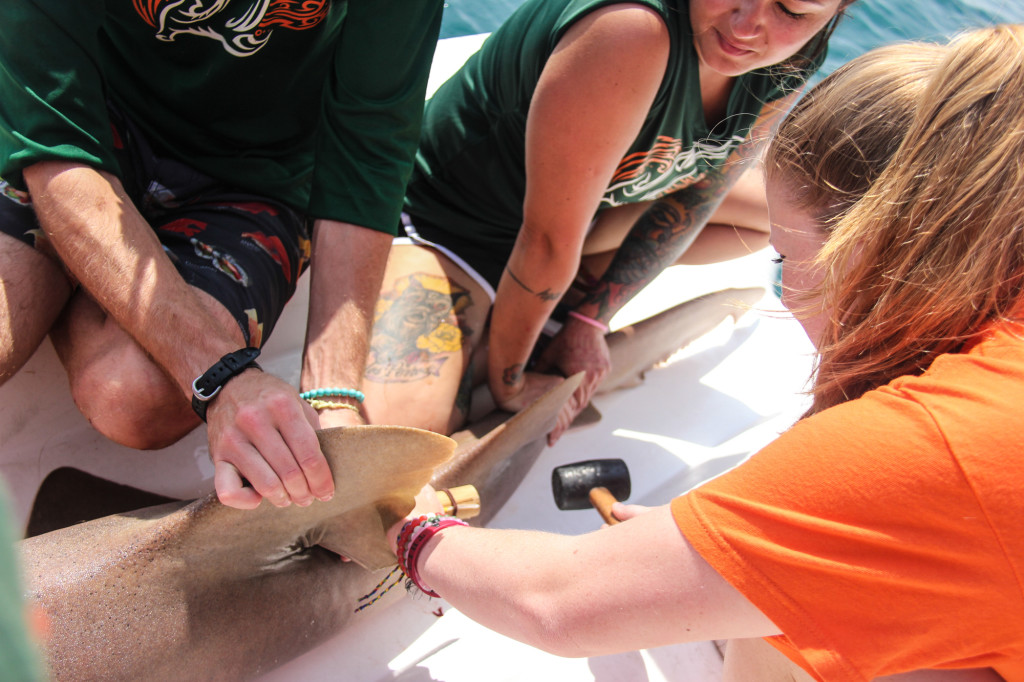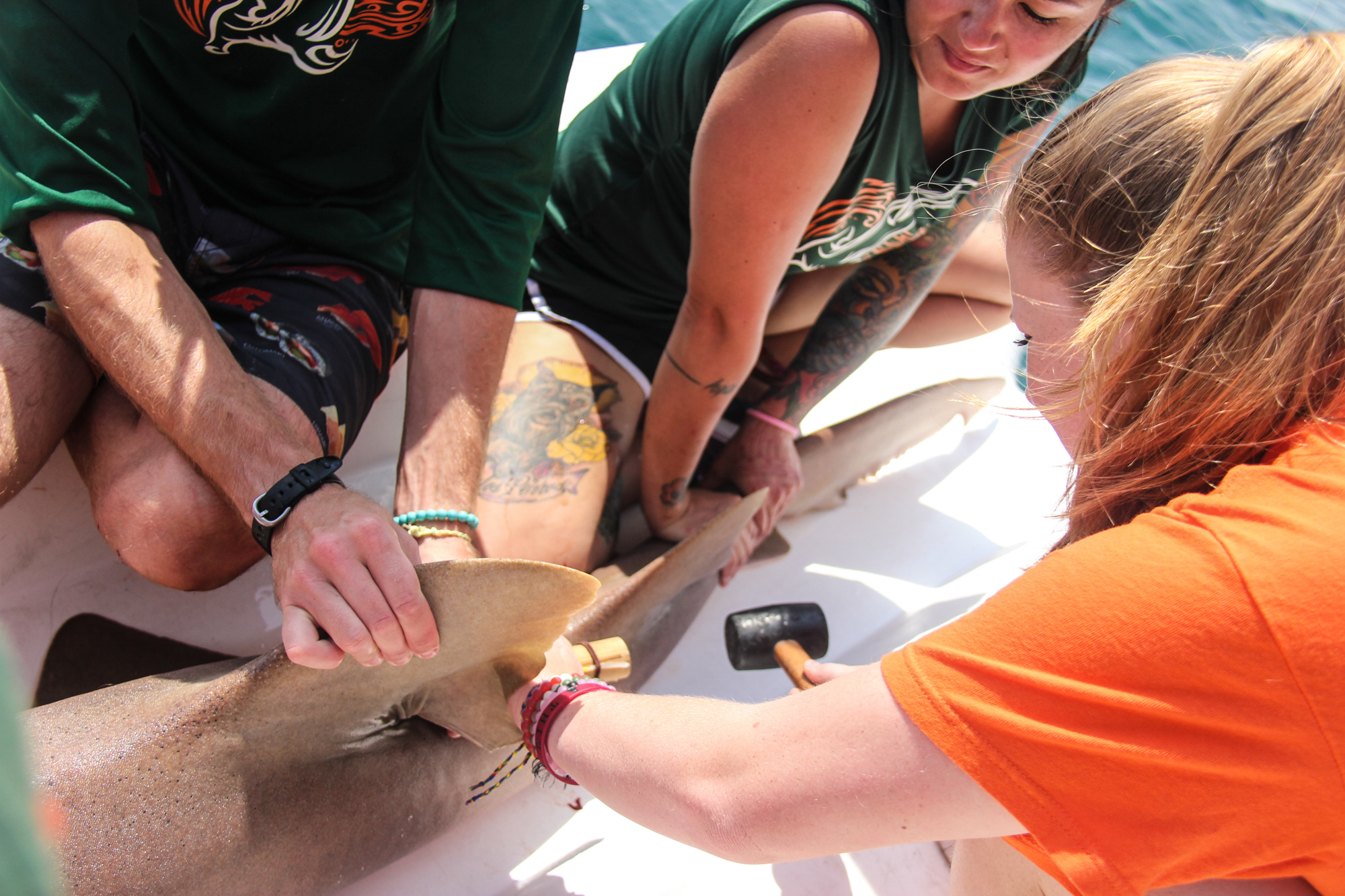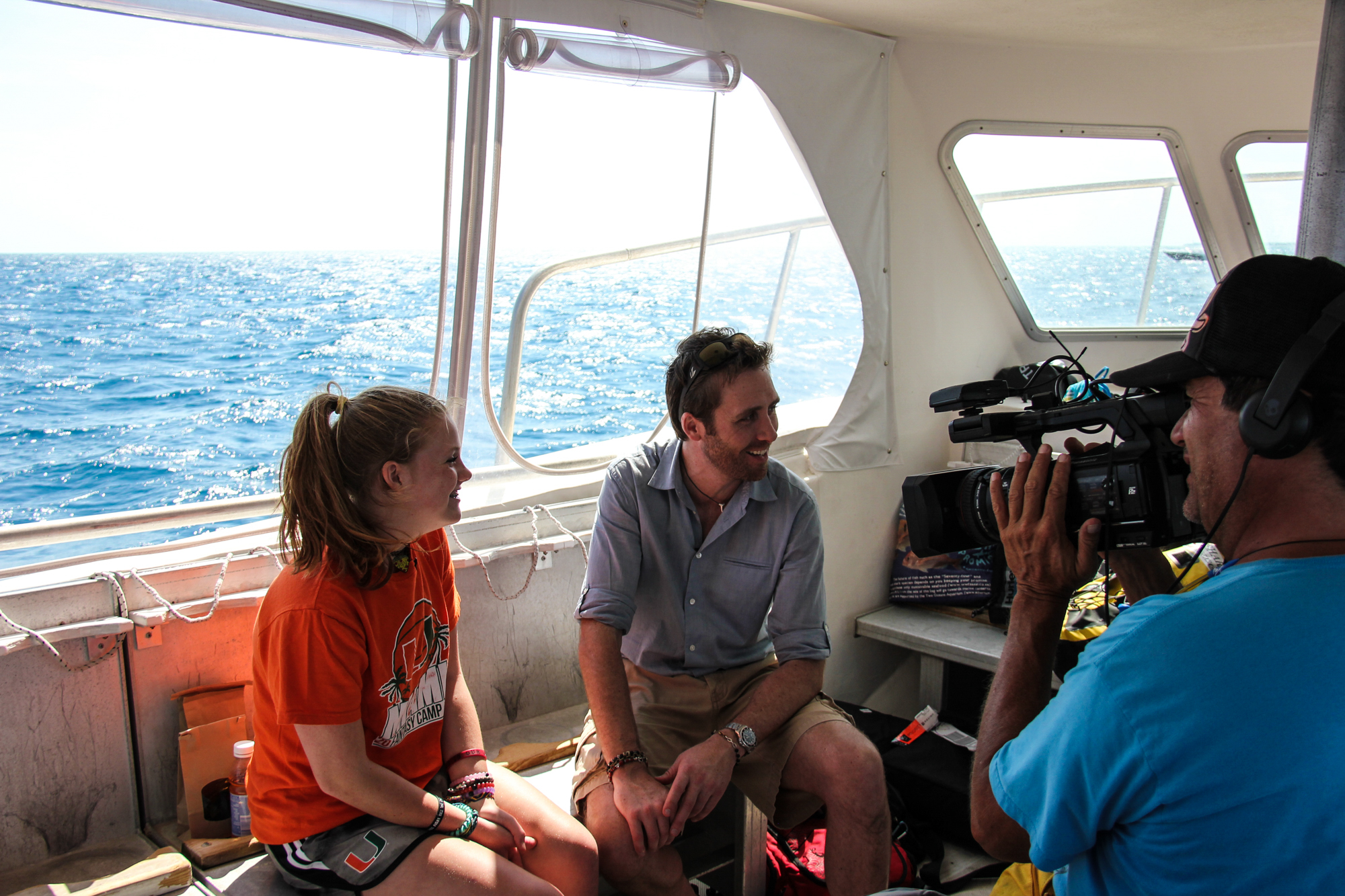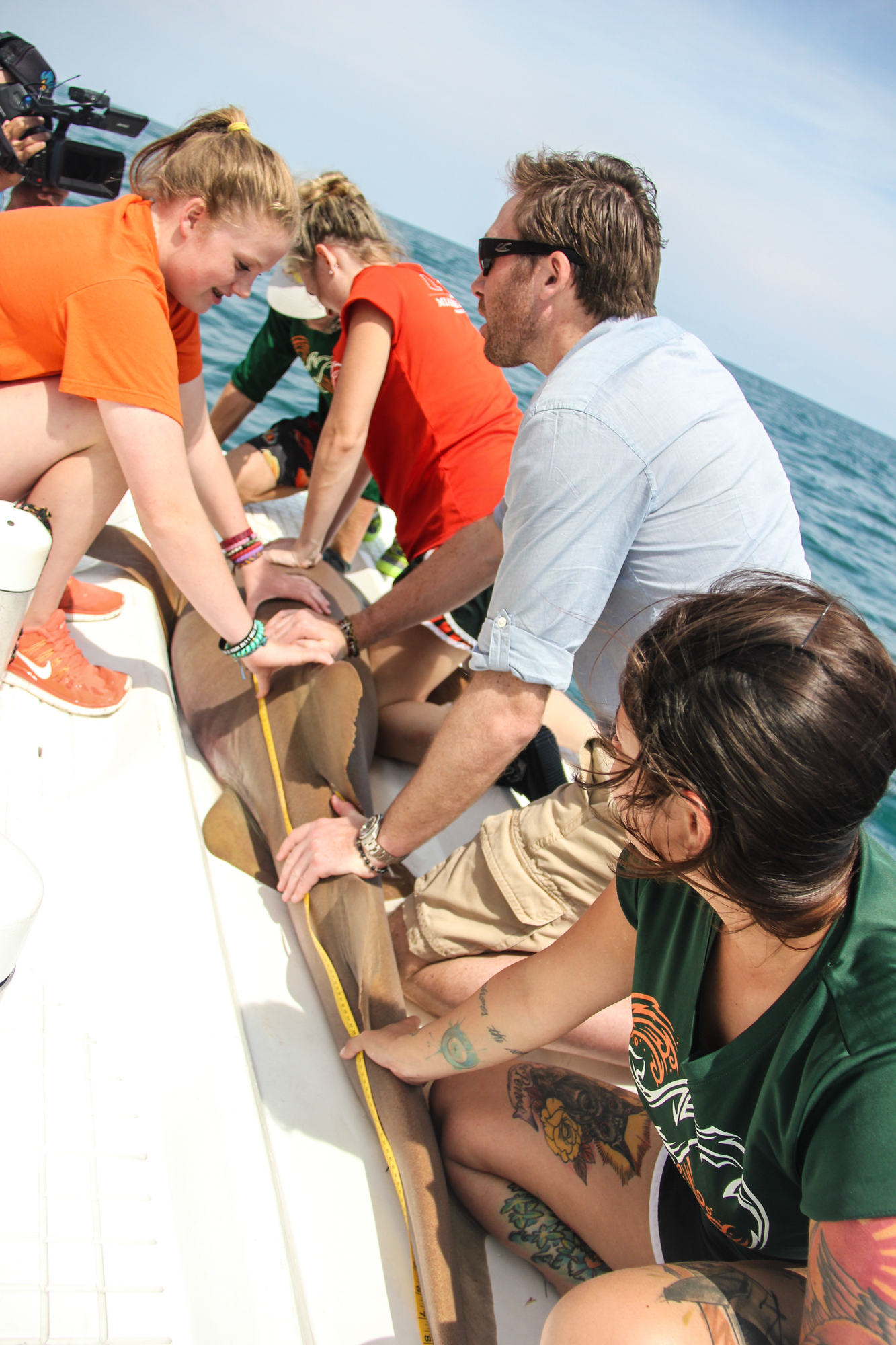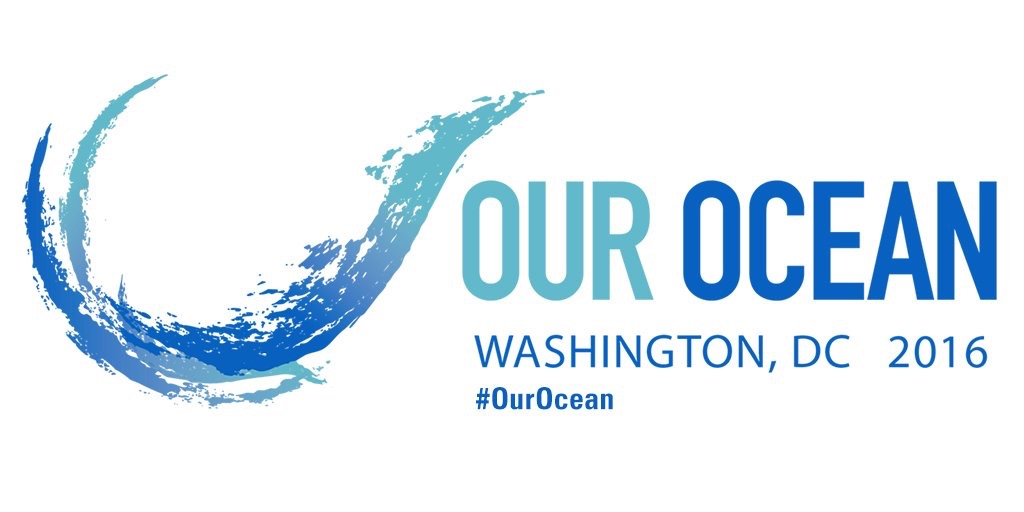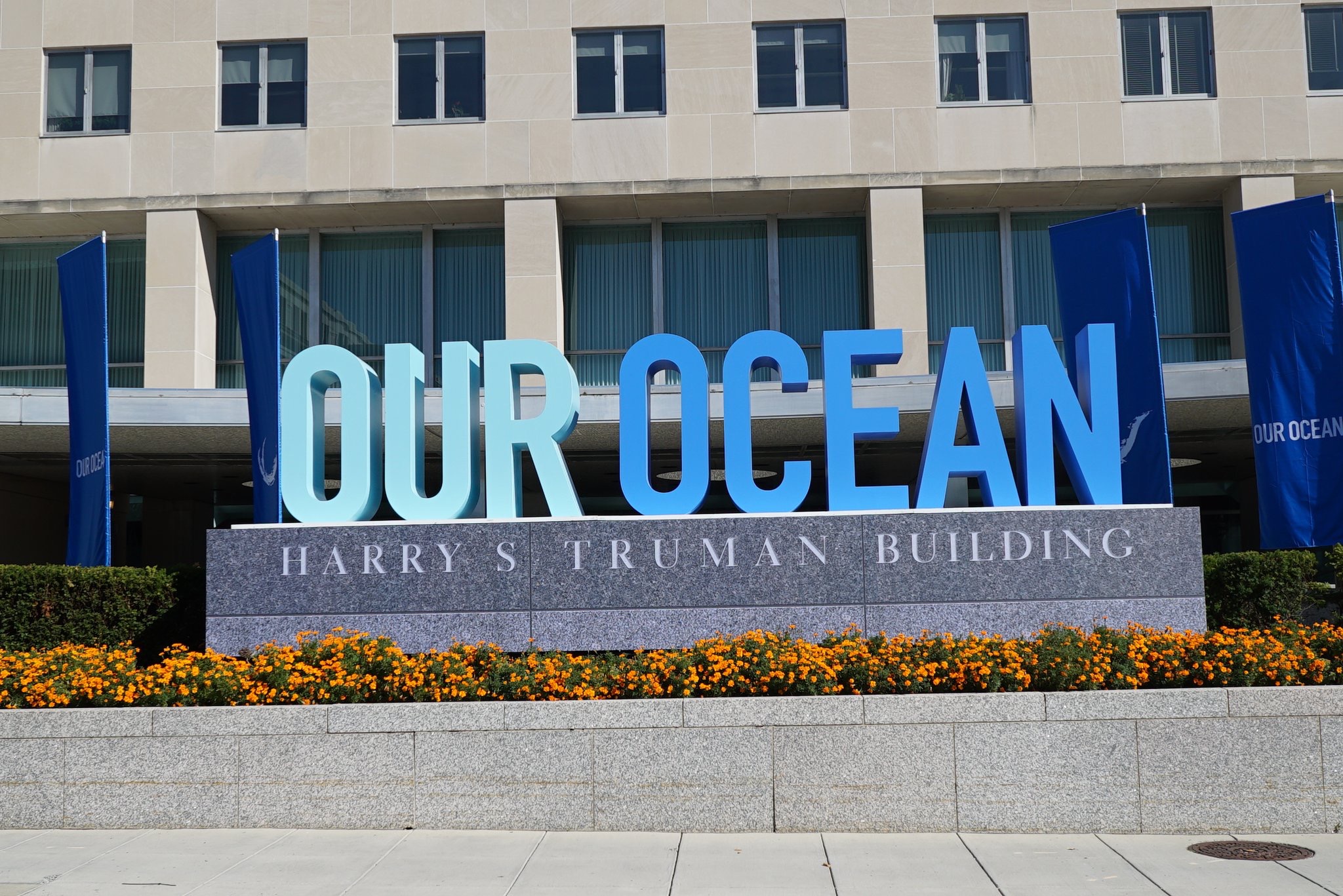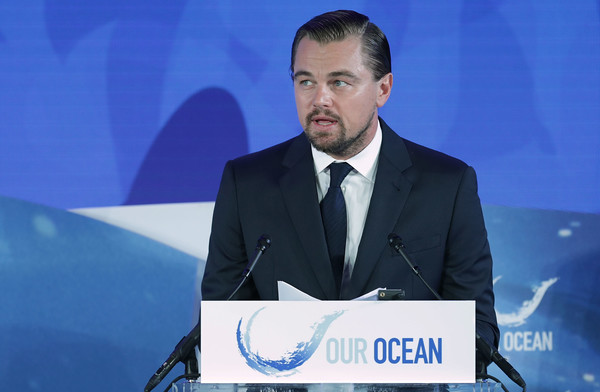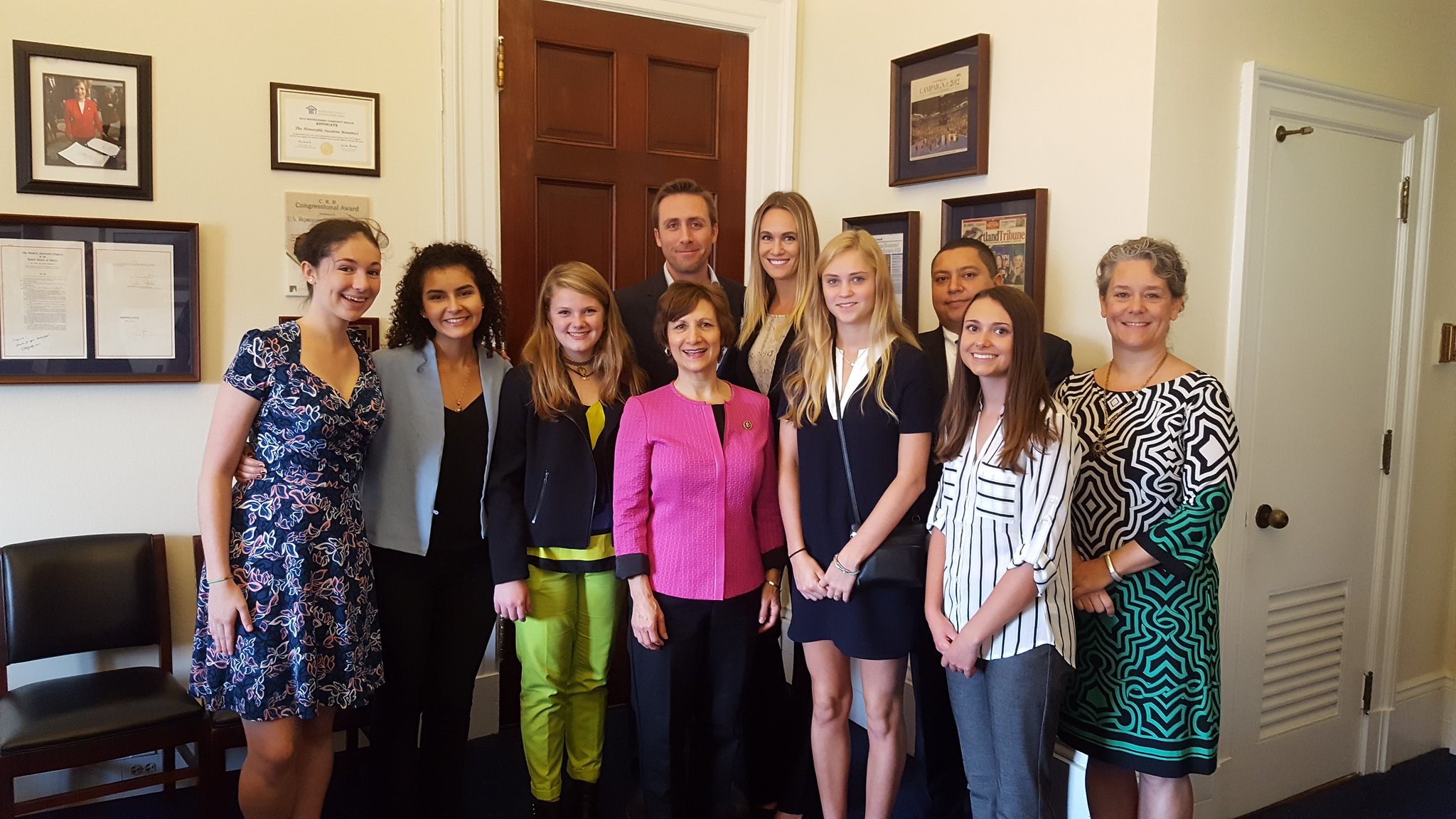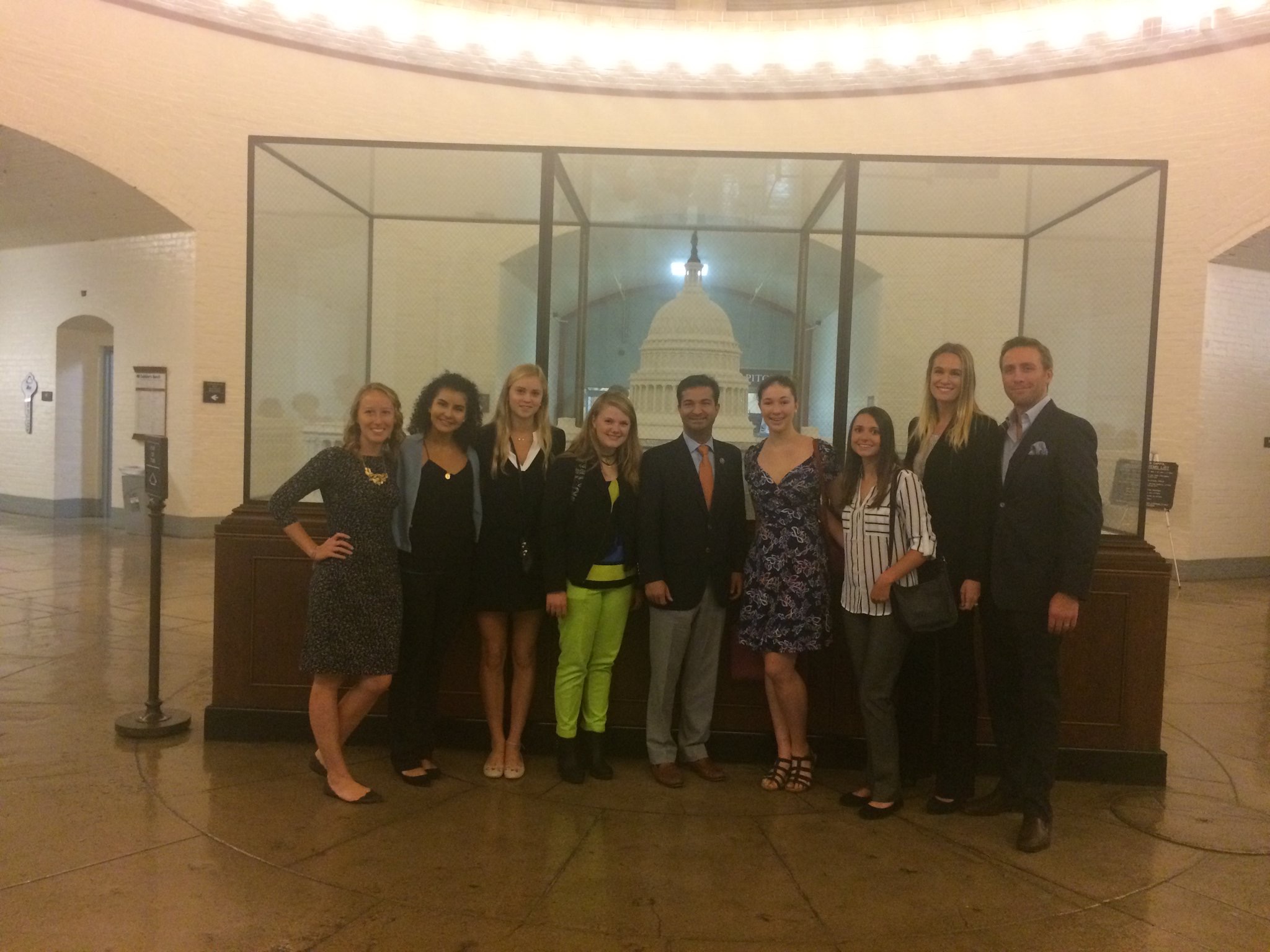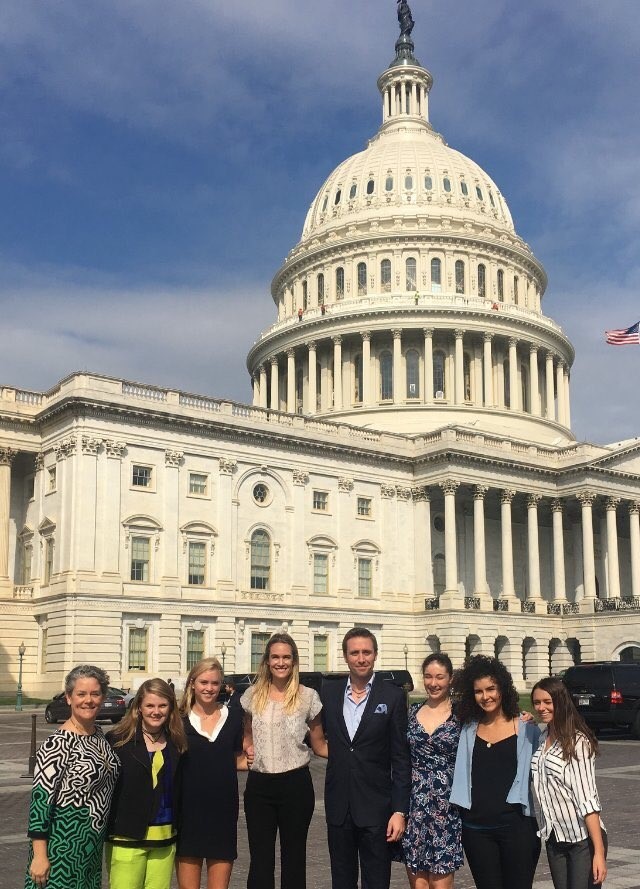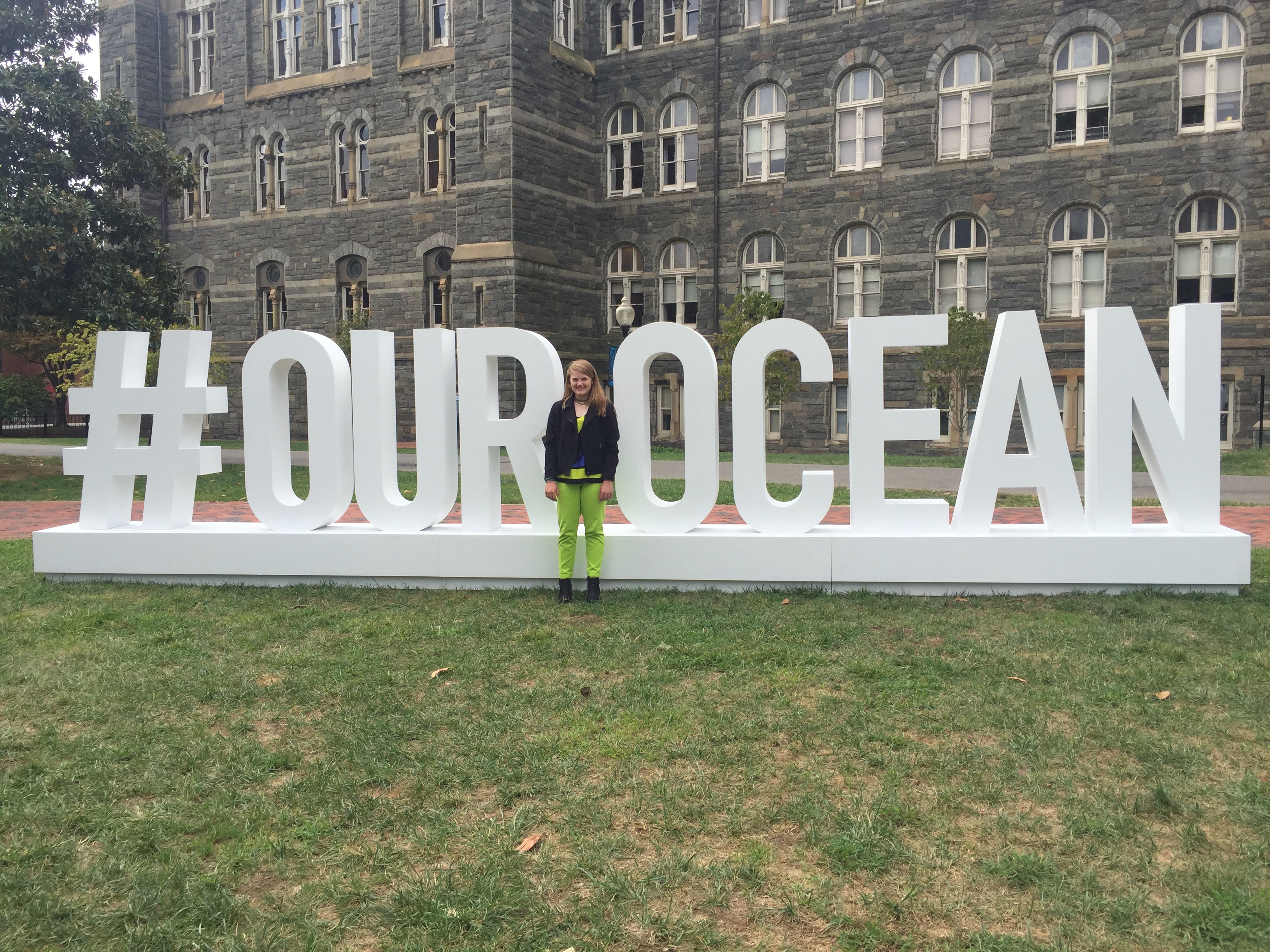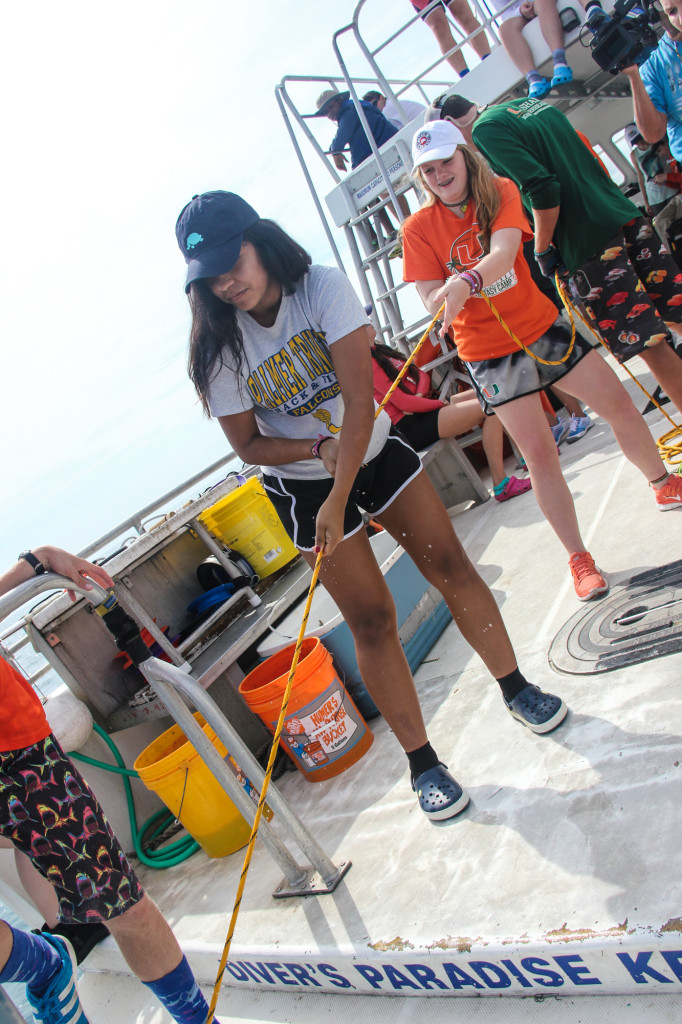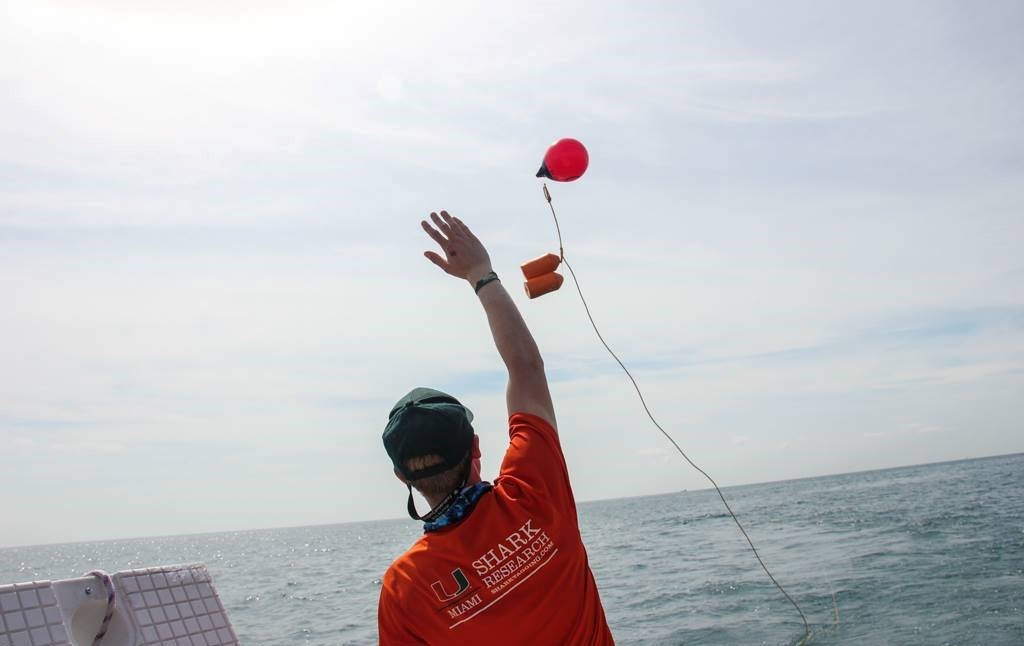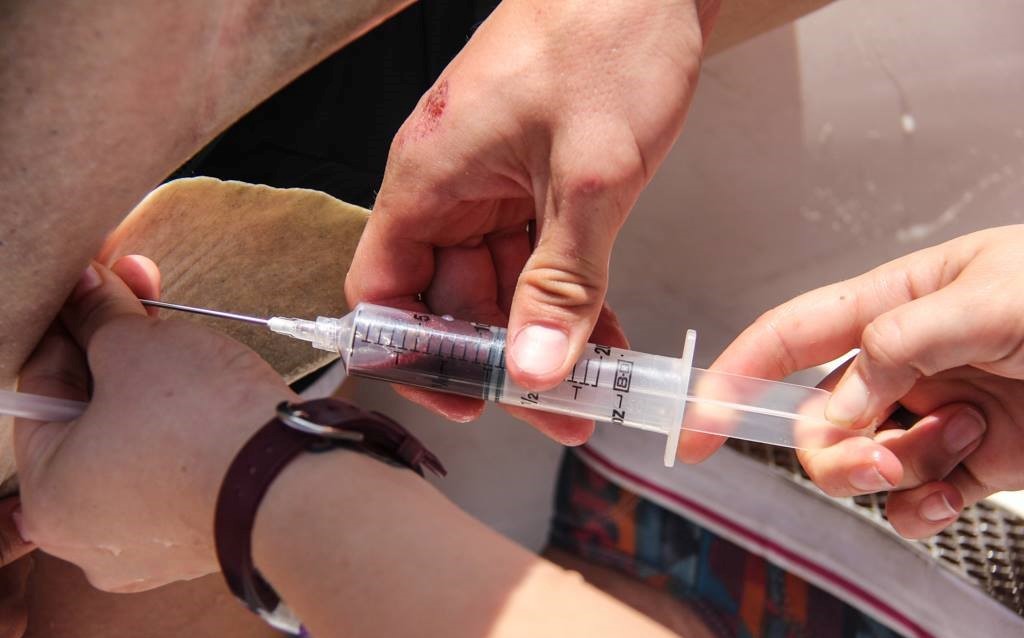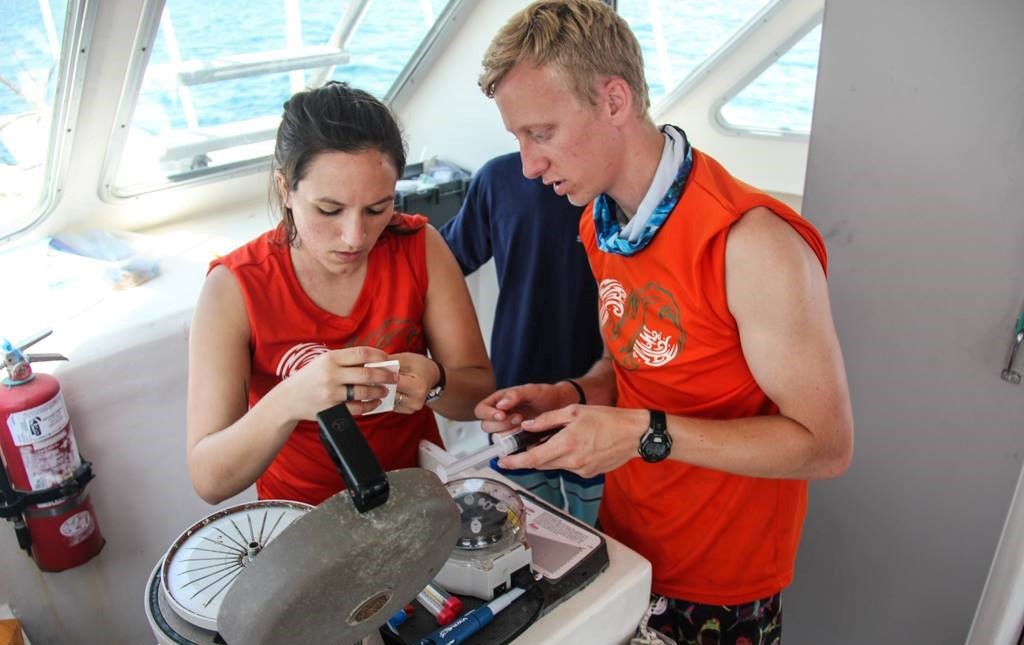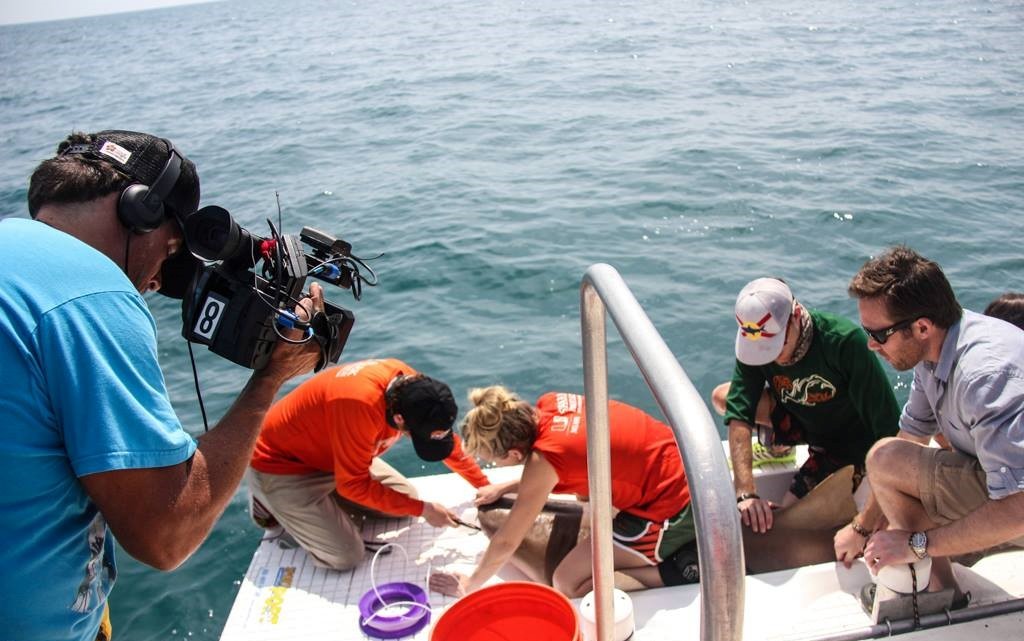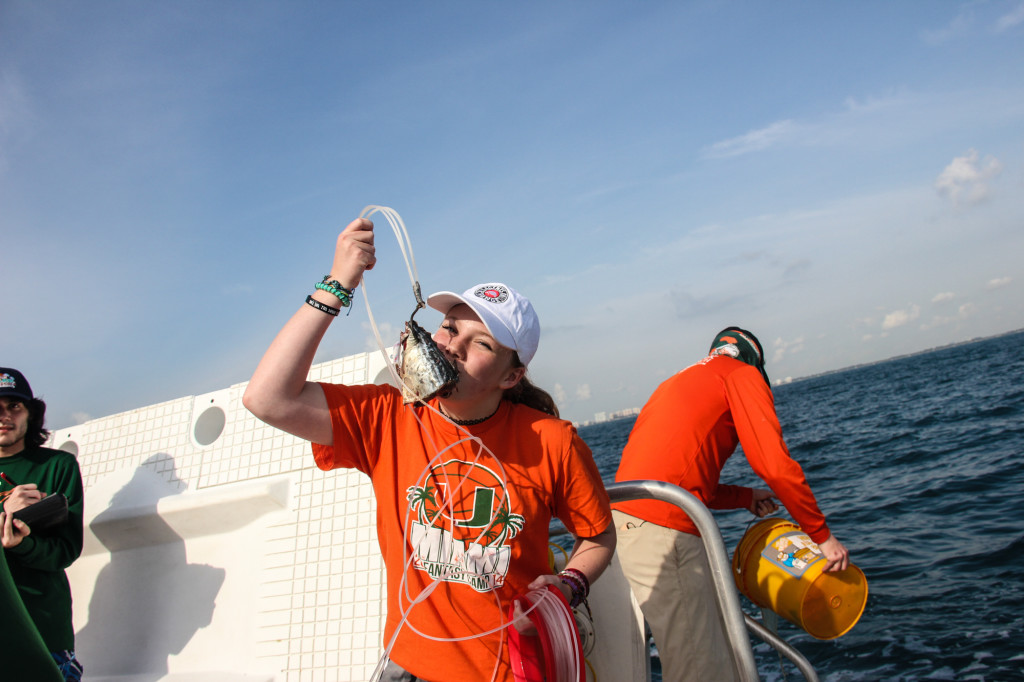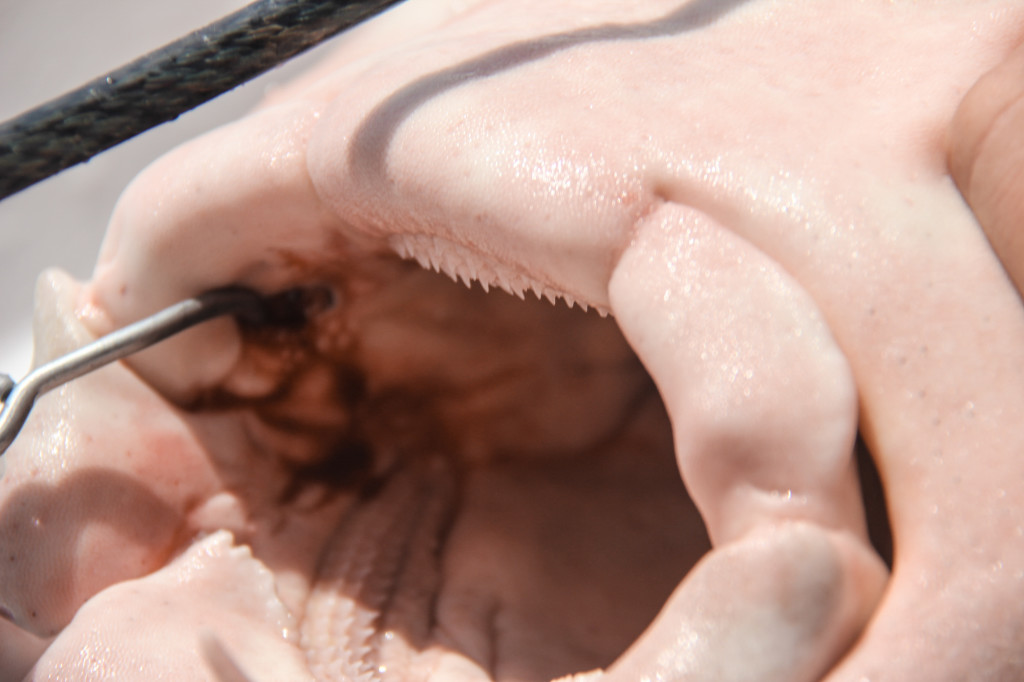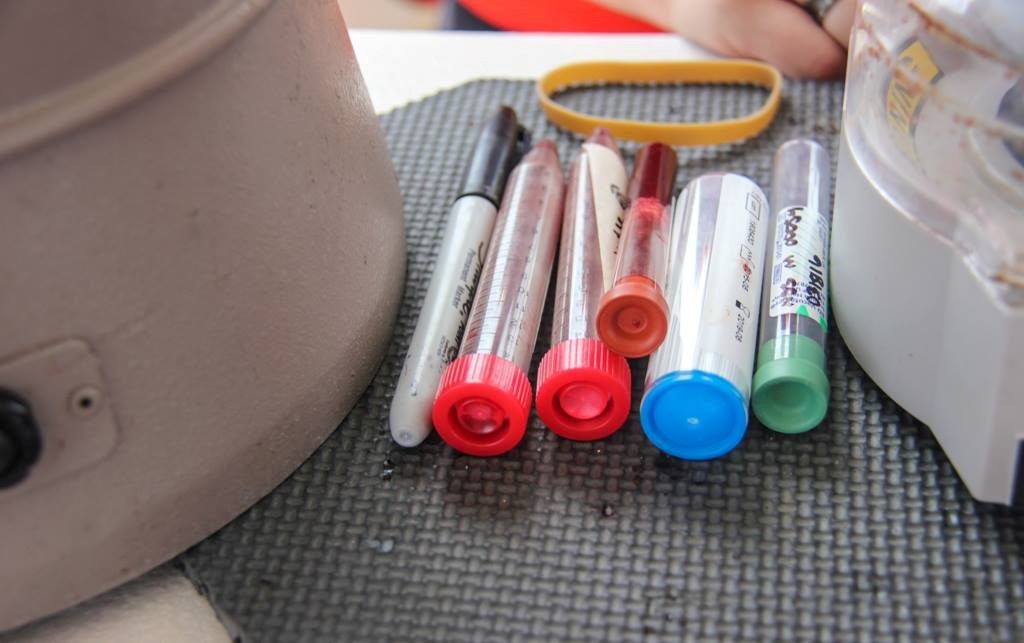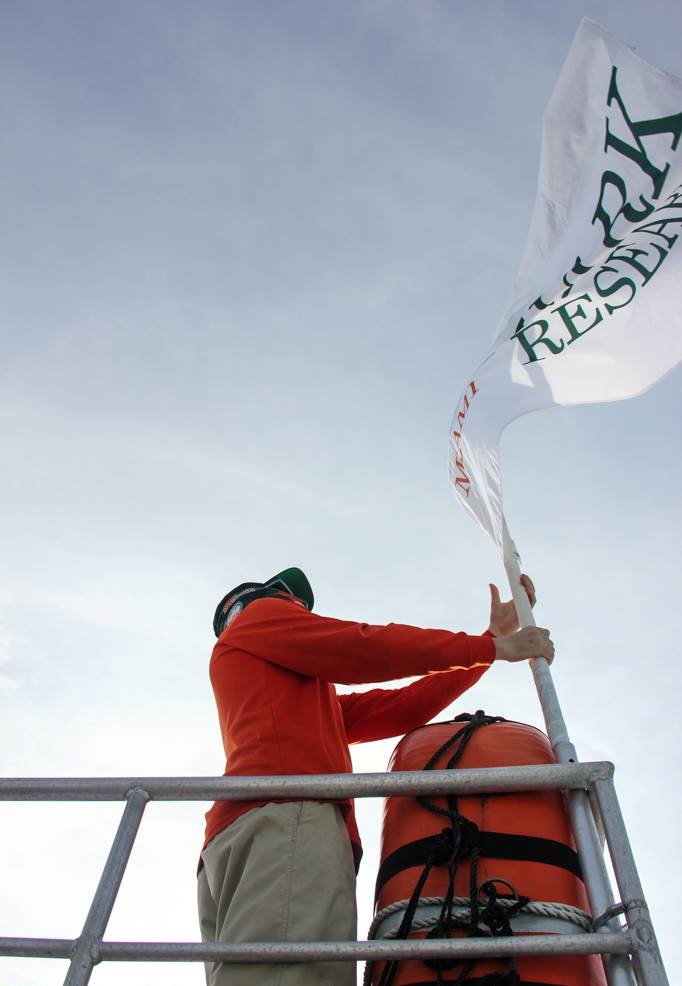
I love sharks.
All sorts of sharks. Nurse Sharks, Mako Sharks, Tiger Sharks, Black Tips, Great Whites, Spinners and my favorite, the Crocodile Shark, to name just a few. With ‘Shark Week’ starting tonight on television I’d like to share some of my own shark related adventures with you while also telling you about some of my science heroes as a way to thank them for the amazing work they are doing for our planet.
My fascination with sharks led me to go on my first shark tagging trip with the University of Miami’s Shark Research & Conservation Program (SRC) through my school, Palmer Trinity, when I was in sixth grade. In honor of the fact that Shark Week begins tonight on The Discovery Channel and National Geographic, I’d like to share some incredible pictures from my last shark tagging adventure with you, as well as tell you a bit about the program and the inspiring people who are involved including two of my science heroes.
The SRC Program was created in 2010 by the University of Miami’s Roni Avissar (Professor at and Dean of the UM Rosenstiel School of Marine and Atmospheric Science), Dr. Kenny Broad (Professor at and Chair of UM’s Department of Marine Ecosystems and Society), and Dr. Neil Hammerschlag (Research Assistant Professor in the Department of Marine Ecosystems and Society and Director of the Shark Research & Conservation Program).
The SRC Program allows students and others to learn about these awesome animals up close and to participate in real shark research by testing their nictitating membranes, taking fin clip samples, measuring their length and helping place identification tags on them before they are safely released back into the wild. Between my school’s affiliation with the University of Miami’s SRC and my participation in the University’s Summer Scholars Program I’ve been fortunate to go on three tagging trips, thus far, and each one was absolutely incredible.
Last summer I was far away from South Florida and any thoughts of shark tagging when my family visited Washington D.C.’s many museums and sights. Upon check-in at our hotel we learned that, coincidentally, we were staying across the street from the Headquarters of the National Geographic Society, so naturally we had to add a visit to their offices to our list of things to do. I am sure glad we did because not only were their exhibits great fun to see but it was an incredible surprise to walk around the building’s exterior and come across a huge photograph of Dr. Hammerschlag standing on the sea floor with a 12′ long Tiger Shark swimming above him! I guess even though I was in Washington I was never really that far from the SCS, the sharks or Dr. Hammerschlag’s fine work.
Dr. Neil Hammerschlag (in the orange shirt above) is a marine ecologist whose research centers broadly on the behavioral ecology, conservation biology, and the movement ecology of marine predators, primarily sharks. Dr. Hammerschlag’s research includes investigating interactions between sharks and their prey, identifying and learning about shark habitats, studying the impact of urbanization on sharks including the impacts of over fishing on their ecosystems and how sharks respond to climate change. Dr. Hammerschlag is not only an educator and research scientist but also an inventor. For example, using ultra sound technology and techniques that he’s invented he studies pregnant sharks without harming them as would have been the case in the past.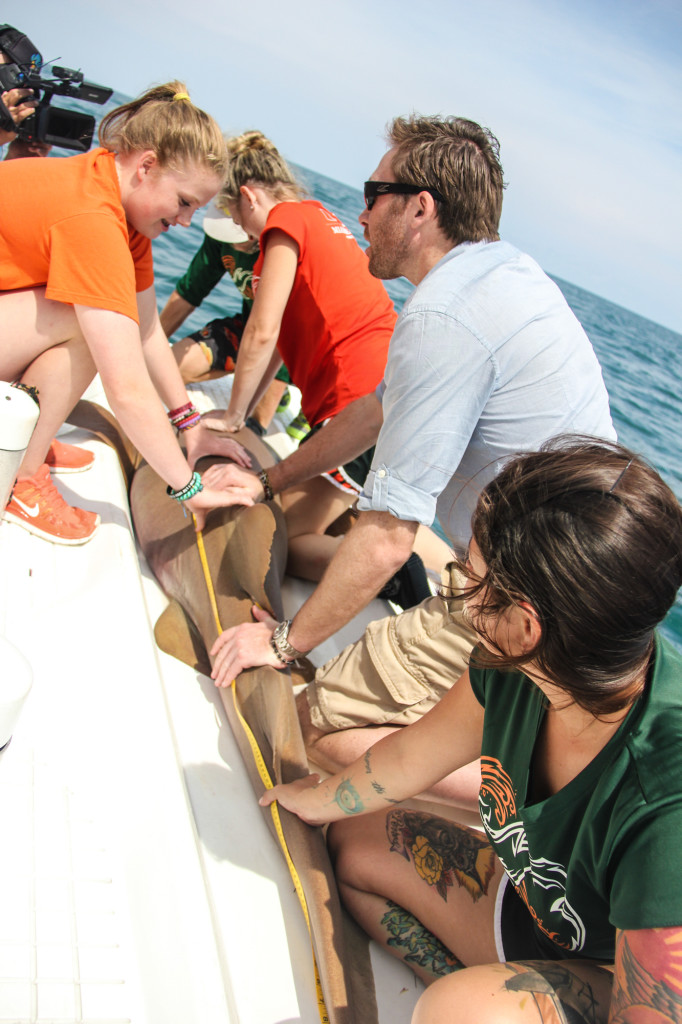
My most recent shark tagging trip was even more exciting and humbling than is normally the case because not just one, but two, of my science heroes were on board that day. In addition to Dr. Hammerschlag we were joined by none other than Philippe Cousteau who was aboard to film a segment on shark tagging for his Xploration Awesome Planet television show (that’s Philippe in the blue shirt) on FOX and Hulu.
Philippe Cousteau is a world renowned adventurer, educator, filmmaker and author. He is the grandson the iconic Jacques Cousteau and part of perhaps the most important family in all of marine biology. Philippe is also the founder of EarthEcho International which he created to “inspire young people worldwide to act now for a sustainable future.” I am deeply proud to be a member of Philippe’s inaugural EarthEcho International Youth Council and for him to be with us on my last shark tagging trip was something I will always remember.
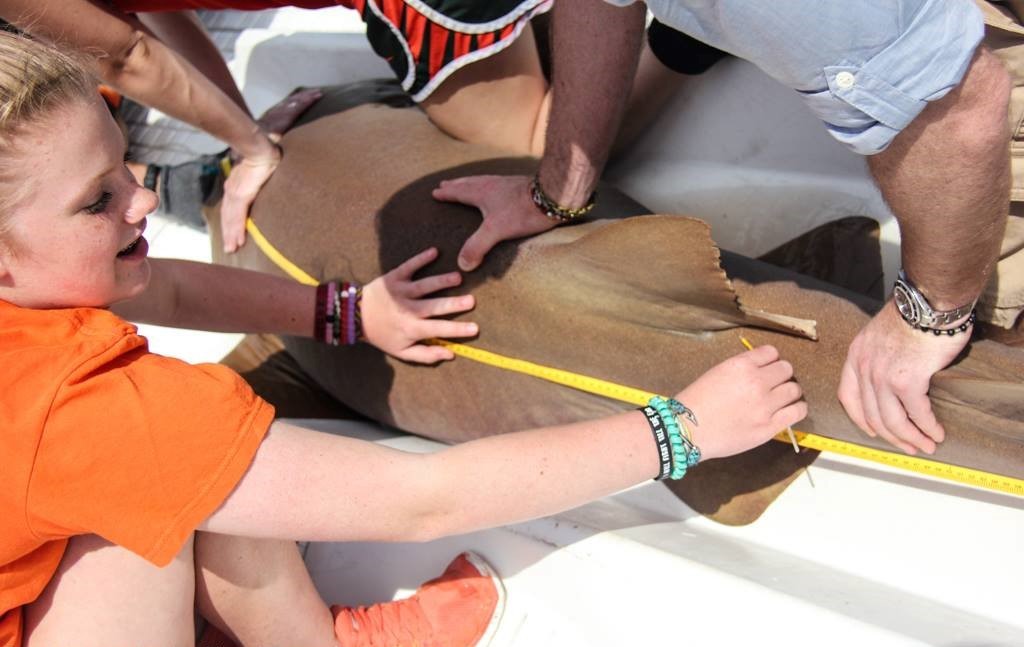
So with Shark Week upon us I hope that you will tune in and watch these cutting edge research educators do their thing.
Dr. Hammerschlag will be premiering in tonight’s Tiger Beach and will also star in Air Jaws: Night Stalker on Tuesday June 28th, both on the Discovery Channel. He will also star (along with the sharks!) in Mega Hammerhead on the National Geographic Channel on June 30th. I also hope that you will tune in and watch Philippe Cousteau’s Nuclear Sharks on the Discovery Channel when it premieres on June 30th.
Allow me to end this post with a special thanks and shout out to a few folks from Palmer Trinity including Dr. Caroline Hammerschlag who was also on the most recent tagging trip my school participated in a couple of months ago. You see, she’s not only an amazing scientist and educator but also a professor at Palmer Trinity and, as I sometimes call her, Mrs. Dr. Hammerschlag, Neil’s wife.
I’m also excited to mention that she; Traci Holstein, our school’s wonderful Science Department Chairperson; and Coach Clint Jones took a small group of Palmer students, myself included, on an absolutely epic Marine Biology Expedition to Hawaii this past Spring. We hiked a volcano, went night diving with Giant Manta Rays, explored nesting sea turtle habitats on black sand beaches and followed Pacific porpoises among other incredible adventures but that, as they say, will be the subject of another post one day.
Thanks to both Palmer and the University of Miami for making such incredible, and indelible, education available and don’t forget to catch some of my heroes on television this week, Shark Week 2016!
